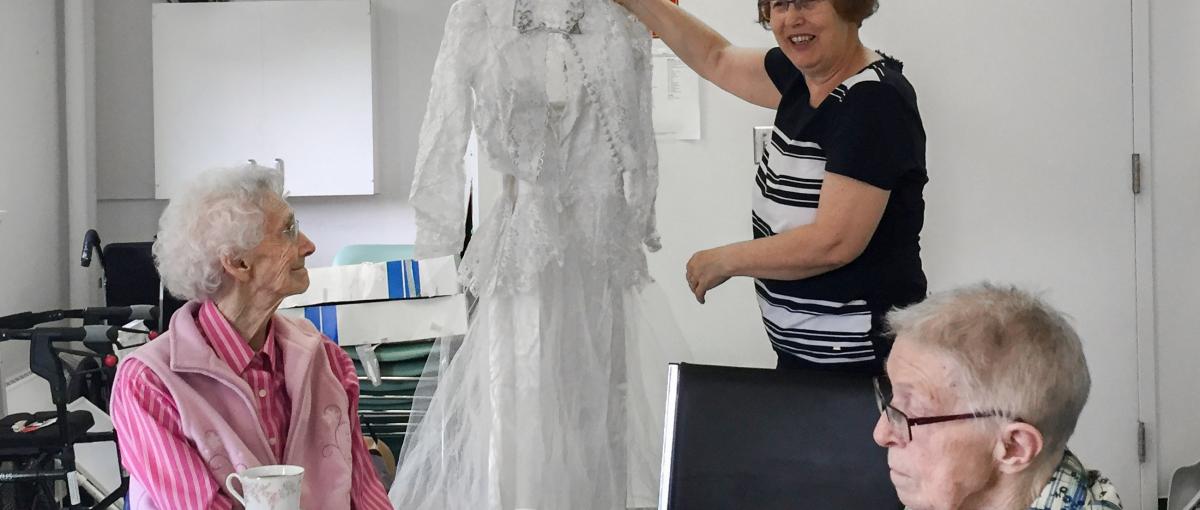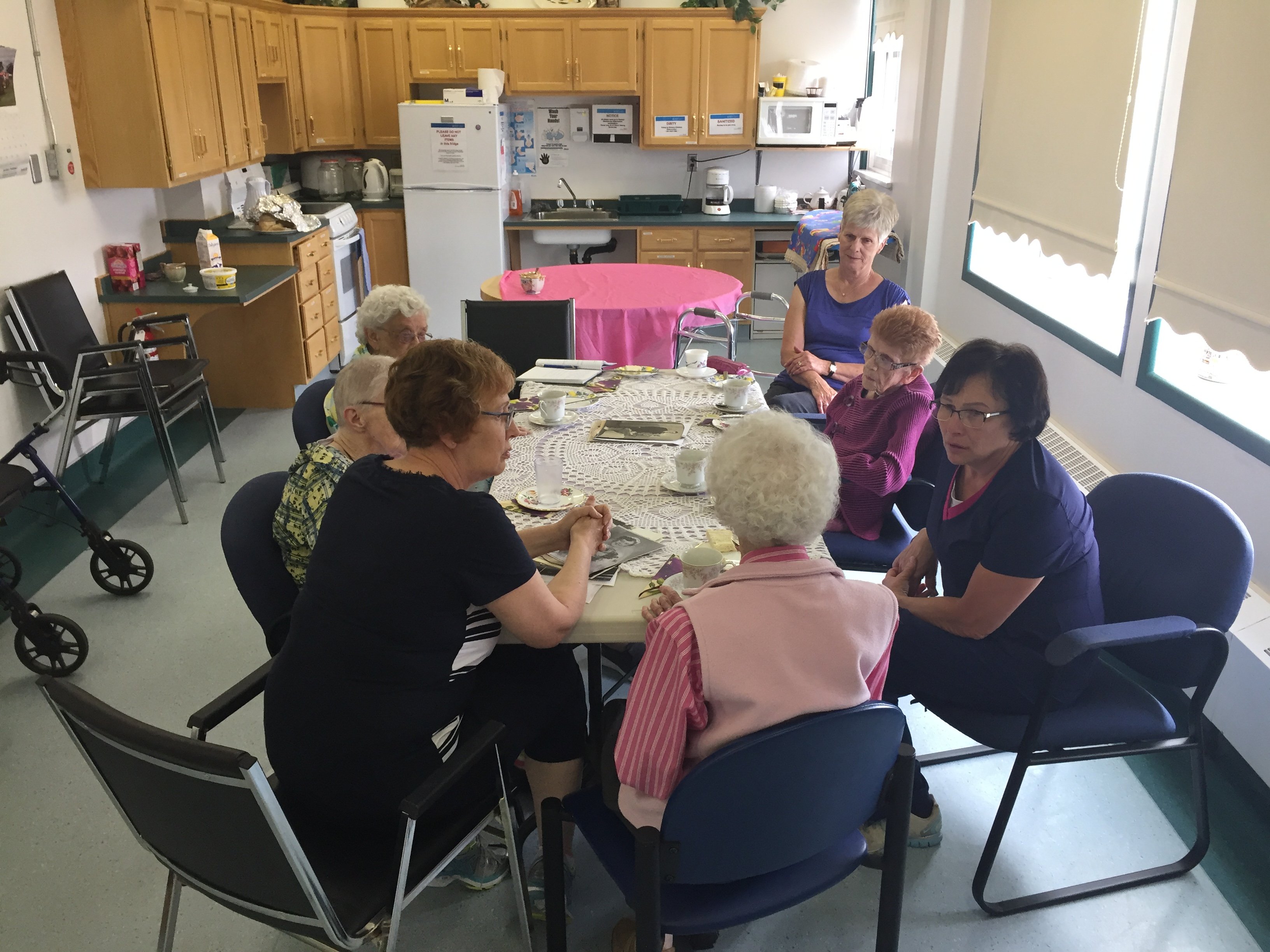Wedding memories bridge past and present
Vintage items help St. Mary's residents socialize

September 26, 2016
By Tessia Verbeek, Senior Advisor, Communications, Covenant Health
“Tell us about your wedding,” asks Diane Semotiuk, Therapy Assistant. “How did you meet your husband?”
Resident Betty Cheshire replies dryly: “I didn’t even like him at first.” The group chuckles appreciatively.
The reply is to one of many open-ended questions designed to share memories and socialize. It is part of the cognitive therapy program at St. Mary’s Health Care Centre in Trochu.
“We saw a gap we could fill for our residents with mild to moderate cognitive impairment,” says Andrea Meding, Occupational Therapist at St. Mary’s. “Our goal is to help promote cognitive function—sometimes in the form of reminiscing.”
Participants need functional hearing for conversation and are selected based on their ability to participate in a group.
“It’s also based on day-to-day functioning—who’s having a good day or who needs the extra stimulation,” says Andrea.
In groups of four to six, residents meet weekly in the rehab unit kitchen. Staff ask questions to help the residents socialize.
“What’s different from what I’ve seen before is we bring in artifacts that residents can see and hold in their hands to help carry the conversation,” says Andrea. “We always try to use as many senses as we can—something they can see, touch, smell.”
Sense stimulation runs through every part of the session.
“After Betty said she missed homemade baking, our staff started baking bread and bringing it in for the group,” says Diane. “The details make a difference: the traditional lace tablecloth, fresh flowers on the table, and tea served in teacups, not the regular mugs.”
“We also make the coffee and tea in the room so residents can smell the preparation, instead of having it brought up from the cafeteria,” adds Andrea.
Today, the theme is weddings, and Diane has brought in two vintage wedding dresses and a series of photographs. The photos include black-and-white celebrity portraits from the ‘40s and ‘50s, as well as photos of the residents around the table.
After picking a theme, St. Mary’s often borrows items from the Trochu & District Museum. It’s a complementary partnership: in return, St. Mary occasionally donates vintage items from previous residents to the museum.
Many items trigger memories for the residents.

“They love talking about their families,” says Diane. “Conversations often turn to their children, growing up on the farm and living through World War II.”
Family members are invited to join the sessions. Carol Robertson, Betty’s daughter, has joined on two occasions.
“Betty really enjoys this activity,” Carol says. “She often brings up her experiences as a war bride. It builds community and gives her something to chat about with the other residents for a few days.”
“It really does break up the day for the residents who need a break,” says Andrea. “If someone has anxious behaviour, we can take her off the unit and she’ll just settle down in this different environment. The therapy gives them something meaningful in that day and that moment.”
The vibe during reminiscence therapy is lively with a sense of pride. Residents are able to share their background and reaffirm who they are.
“Each resident has stories and value to offer,” says Diane. “This program also helps staff see residents in a different light—it adds new personal insight to the care we provide.”